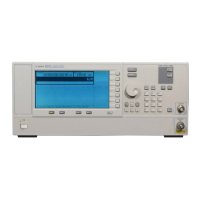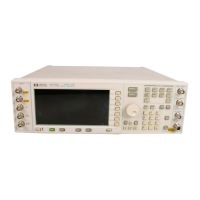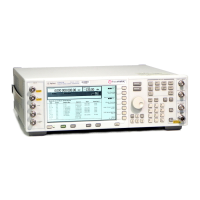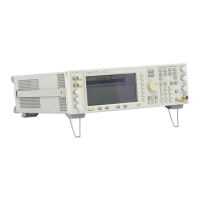Fundamental Operation
Using Data Storage Functions
Chapter 244
Using Data Storage Functions
This section explains how to use the two forms of signal generator data storage: the memory
catalog and the instrument state register.
Using the Memory Catalog
The signal generator’s interface for stored files is the memory catalog. From there, you can
view, copy, rename and delete files, either from the signal generator’s front panel or via
remote controller. (For information on performing these tasks remotely, see the programming
guide.)
The memory catalog may contain the following file types and their associated data:
BIN bitmap data
LIST sweep data from the List Mode Values table including frequency, amplitude,
and dwell time
STAT instrument state data, controlling instrument operating state parameters,
such as frequency, amplitude, and mode
UFLT user flatness calibration correction pair data (user-defined frequency and
corresponding amplitude correction values)
Viewing Stored Files
1. Press
Utility > Memory Catalog > Catalog Type.
The default catalog type is All (all files in the memory catalog are listed in alphabetical
order, regardless of type). When viewing all files, file name listings include their file type,
such as <file name>@STATE or <file name>@LIST.
2. Press
List.
The Catalog of List Files is displayed.
3. Press
Catalog Type > State.
The Catalog of State Files is displayed.
4. Press
Catalog Type > User Flatness.
The Catalog of USERFLAT Files is displayed.

